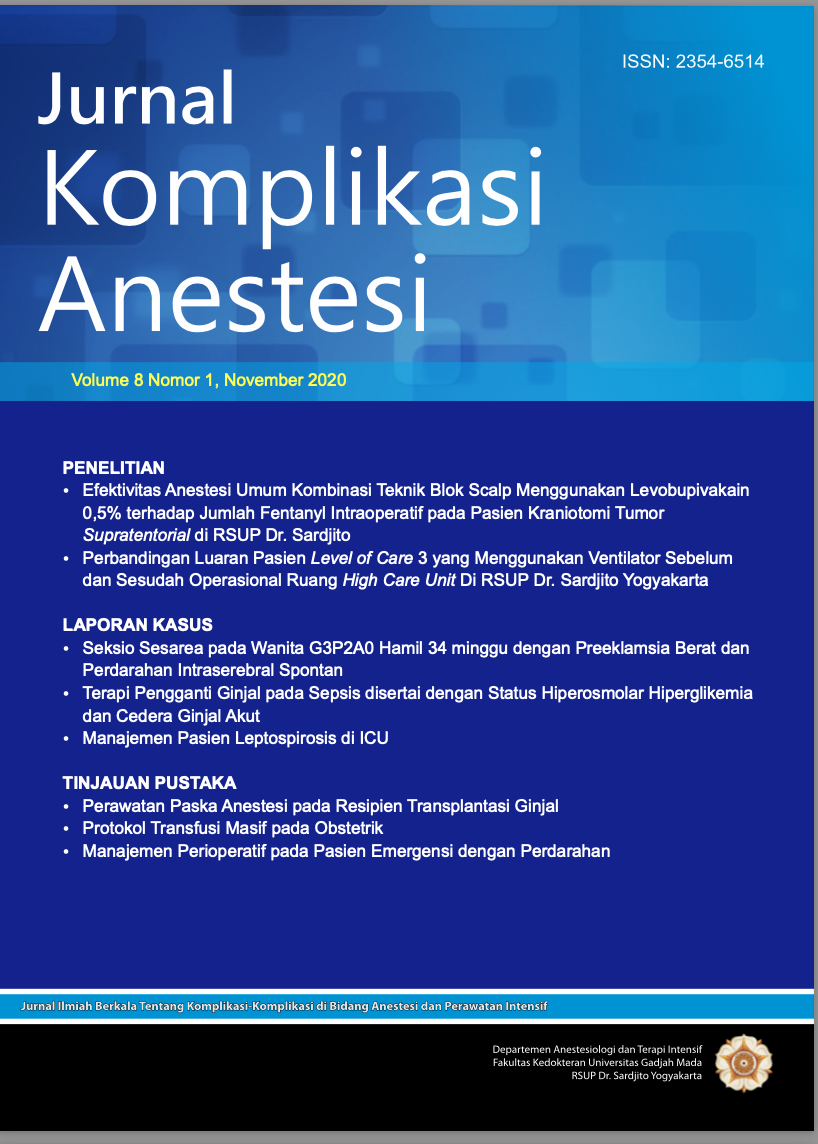Protokol Transfusi Masif pada Obstetrik
Abstract
World population’s access to safe blood is limited. Only 30% of countries in the world have comprehensive transfusion services in their countries. Meanwhile, massive transfusion therapy has poor survival rate with mortality rate of about 45-67%. The patient’s age, duration and severity of shock, Disseminated Intravascular Coagulation (DIC), and the amount of blood transfused affect the fnal outcome. Coagulopathy has a high mortality rate within 4-6 days after hospitalization. Many obstetrics and gynecology patients have the potential to require blood transfusions. Cesarean section (SC) and hysterectomy are two of the surgical procedures that are frequent and potentially bleeding, requiring blood transfusion. Other conditions are postpartum hemorrhage, placenta previa, and ruptured ectopic pregnancy. Bleeding in the obstetric feld is still a highest cause of maternal death in Indonesia.

Copyright (c) 2021 Yusmein Uyun, Bhirowo Yudo Pratomo, Agung Diky Hernawan

This work is licensed under a Creative Commons Attribution-NonCommercial-ShareAlike 4.0 International License.
The Contributor and the company/institution agree that all copies of the Final Published
Version or any part thereof distributed or posted by them in print or electronic format as permitted herein will include the notice of copyright as stipulated in the Journal and a full citation to the Journal.
















